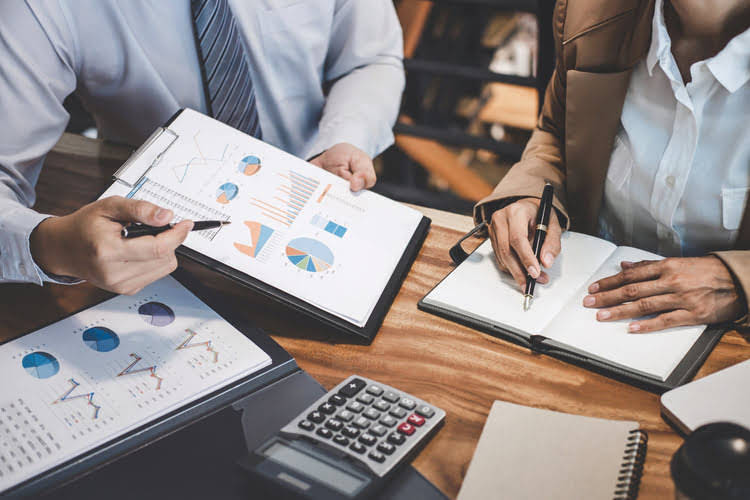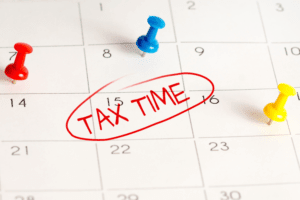
We can find the net income for the period at the end of the company’s income statement (consolidated statements of income). Strong financial and accounting acumen is required when assessing the financial potential of a company. The statement of retained earnings is primarily used to assess the management’s future outlook for the business. Decisions related to dividend distribution and appropriation of earnings are in the hands of management and the board. Accountants need this information and management’s guidance before signing off on the statement of retained earnings.

Great! The Financial Professional Will Get Back To You Soon.
Keep researching to deepen your understanding of retained earnings and position yourself for long-term success. For example, if you have a high-interest loan, paying that off could generate the most savings for your business. On the other hand, if you have a loan with more lenient terms and interest rates, it might make more sense to pay that one off last if you have more immediate priorities. Perhaps the most common use of retained earnings is financing expansion efforts.

Share repurchases
That’s why you must carefully consider how best to use your company’s retained earnings. The following are four common examples of how businesses might use their retained earnings. While retained earnings https://www.instagram.com/bookstime_inc can be an excellent resource for financing growth, they can also tie up a significant amount of capital. Next, add the net profit or subtract the net loss incurred during the current period, which is 2023. Since Company A made a net profit of $30,000, we will add $30,000 to $100,000.

Importance of Retained Earnings for Small Businesses

This is the final step, which example of retained earnings statement will also be used as your beginning balance when calculating next year’s retained earnings. Brex Treasury is not a bank nor an investment adviser and a Brex business account is not an FDIC-insured bank account. Review the background of Brex Treasury or its investment professionals on FINRA’s BrokerCheck website.
- The statement of retained earnings examples show how the retained earnings have changed during the financial period.
- This statement is often used to prepare before the statement of stockholder’s equity because retained earnings is needed for the overall ending equity calculation.
- This understanding would make interpreting and presenting the statement of retained earnings very intuitive for us.
- They are a measure of a company’s financial health and they can promote stability and growth.
- There can be cases where a company may have a negative retained earnings balance.
- Although they’re shareholders, they’re a few steps removed from the business.
- Retained earnings are the profits a company has earned and retained over time, while reserves are funds set aside for specific purposes, like contingencies or dividends.
The statement of retained earnings is a sub-section of a broader statement of stockholder’s equity, which shows changes from year to year of all equity accounts. Both management and stockholders would also want to utilize surplus net income towards the payment of high-interest debt over dividend payout. Every time your business makes a net profit, the retained earnings of your business increase, and a net loss leads to a decrease in the retained earnings of your business. This means the company was able to generate $5 in market value for each dollar of earnings it retained. Had the company used debt capital instead, they’d have generated less value because of the interest payment; internally generated capital helps profitable companies create value more efficiently. Consistently higher dividends in the statement indicate that the company is maturing and doesn’t need capital for growth, whereas younger, high-growth companies are less likely to declare dividends.
- Note that accumulation can lead to more severe consequences in the future.
- Equity is a measure of your business’s worth, after adding up assets and taking away liabilities.
- A company’s beginning retained earnings are the first amount of retained earnings that the company has after its initial public offering (IPO).
- Finally, companies can also choose to repurchase their own stock, which reduces retained earnings by the investment amount.
- To find your shareholders’ equity (or owner’s equity) balance, subtract the total amount of dividends paid out from the beginning equity balance.
Retained https://www.bookstime.com/ earnings are a shaky source of funds because a business’s profits change. Retained earnings result from accumulated profits and the given reporting year. Meanwhile, net profit represents the money the company gained in the specific reporting period.
- Retained earnings are part of the profit that your business earns that is retained for future use.
- In other words, assume a company makes money (has net income) for the year and only distributes half of the profits to its shareholders as a distribution.
- However, it can be challenged by the shareholders through a majority vote because they are the real owners of the company.
- A company’s retained earnings statement begins with the company’s beginning equity.
- 11 Financial’s website is limited to the dissemination of general information pertaining to its advisory services, together with access to additional investment-related information, publications, and links.
- It simply means that the company has paid out more to its shareholders than it has reported in profits.
If a company pays all of its retained earnings out as dividends or does not reinvest back into the business, earnings growth might suffer. Also, a company that is not using its retained earnings effectively is more likely to take on additional debt or issue new equity shares to finance growth. Remember that your company’s retained earnings account will decrease by the amount of dividends paid out for the given accounting period. When calculating retained earnings, you’ll need to incorporate all forms of dividends; you’ll see that stock and cash dividends can impact the final number significantly.
Your company’s balance sheet may include a shareholders’ equity section. This line item reports the net value of the company—how much your company is worth if you decide to liquidate all your assets. Let’s say that in March, business continues roaring along, and you make another $10,000 in profit. Since you’re thinking of keeping that money for reinvestment in the business, you forego a cash dividend and decide to issue a 5% stock dividend instead. Once your cost of goods sold, expenses, and any liabilities are covered, you have to pay out cash dividends to shareholders.
